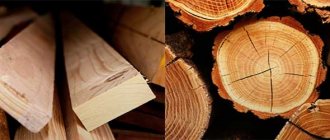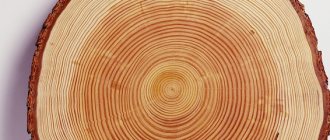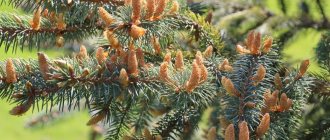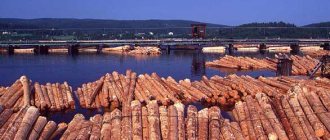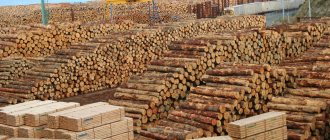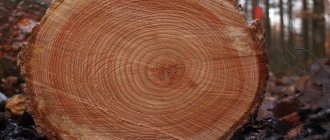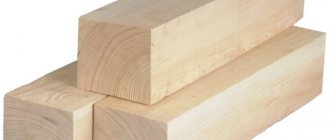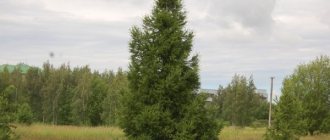Since ancient times, man could not do without wood. It has not lost its significance even today, despite the fact that many modern and advanced materials have replaced it, which have displaced timber from some areas of its application. However, other directions and areas of application, new technologies have emerged, where wood products are simply irreplaceable.
Basic properties of wood
Like many building materials, wood material differs in its characteristic properties and features. Properties can be both positive and negative indicators. These properties are determined by the type of timber.
The properties of wood are divided into:
- Density.
- Hardness.
- Humidity.
- Drying out.
- Swelling.
- Warping.
- Cleavability.
- Wear resistance.
- Flexibility.
- Deformation.
- Thermal conductivity.
No building material has such technological and decorative properties as wood products. It is malleable when processed. Durable and lightweight material that retains warmth and a delicate scent for a long time. But, like any material, it has positive and negative properties.
Wood structure
Most of the tree, up to 90% of the volume, is the trunk, which includes:
- bark. Its property is to protect the trunk from temperature changes, invasion of fungal bacteria, moisture evaporation and mechanical stress;
- cambium. A narrow layer of living cells in the form of a ring, with the ability to divide and grow;
- wood. The component of the trunk through which moisture flows from the roots to the crown.
Technological properties of wood
Technical properties are characterized by the following indicators:
- ability to retain metal fasteners. The denser the wood material, the more firmly the fasteners are held in it;
- wear resistance. This is the ability to resist destruction during mechanical interaction. The ends have increased wear resistance. Increased hardness and density allows the wood to undergo little wear.
- splitability. The property of wood under mechanical influence to be divided into parts along the grain. Resistance to cracking increases with increasing viscosity. This property has a positive indicator. Some varieties can only be harvested by splitting. Splinterability also has a negative property: when using metal fasteners, splits can form.
Wood Density
The proportionality of the weight of lumber to its volume is density. The density is set in kg/m3, and is directly dependent on humidity.
Density is divided into:
- small;
- average;
- high density.
Wood hardness
The following indicators affect hardness:
- breed;
- tree growing conditions. The same type of rock can be of different hardness if the trees grew in different climatic conditions;
- moisture content of timber.
The hardness of one trunk may vary depending on the type of cut used. The ends are harder than the tangential and radial surfaces.
Wear resistance and flexibility of wood
- wear resistance - the ability to resist abrasion of a material during friction. There is more abrasion from the sides than from the ends. The hardest and most dense wood is the least susceptible to wear. High humidity is a good aid to wear.
- flexibility - one of the properties of wooden blanks is to change shape under external force. Bending is based on the ability of wood to be deformed under the influence of bending equipment. The bending procedure is easier and faster when the wood is pre-moistened and heated;
- Impact strength is the property of absorbing impact without deflation.
Thermal properties
These properties include the following indicators:
- thermal power is the ability of a wood material to accumulate heat;
- thermal conductivity - transposition of thermal energy by molecules of a substance;
- thermal diffusivity - equal temperature distribution throughout the volume;
- thermal expansion—a change in linear dimensions and configuration with temperature changes.
Wood moisture content
Humidity is the percentage ratio of the amount of moisture in a certain volume of wood material to the same volume of completely dry material. Each breed has individual moisture properties.
Humidity divided by degrees:
- wet degree. Timber kept in water for a long time;
- freshly sawn;
- air-dried;
- basic degree.
Shrinkage, swelling and warping of lumber
- Shrinkage. Reduction of parameters when moisture is removed. Complete shrinkage for further processing of wood material should be in the range from 11 to 17%. The percentage of shrinkage is necessarily taken into account when manufacturing lumber.
- Warping. Transformation of shape during drying, storage and filing. Basically, warping occurs due to different amounts of shrinkage and structural directions.
- Swelling. This is the property of increasing size with increasing moisture. Swelling proceeds to a specific limit of moisture absorption.
Swelling is one of the negative properties of wood. Although in some cases swelling plays a significant role: it creates a seal on joints in boats, barrels and tubs.
Physical properties of wood
1. Density.
An absolute value measured by the ratio of weight to volume. Density directly depends on the type of rock and the amount of moisture. The lower the humidity, the lower the density.
2. Thermal conductivity.
The property of wood to transmit heat from the roots to the crown. The quality of thermal conductivity is influenced by the following factors:
- air temperature;
- internal humidity;
- saturation;
- quantity of heat.
3. Sound conductivity.
A special property of timber is to transmit sound. The sound permeability of wood is higher than that of some materials. This indicator must be taken into account in construction, where sound insulation of walls and carpentry is extremely important.
4. Electrical conductivity.
The positive property of lumber is to conduct current. Electrical conductivity is affected by humidity, rock, fiber direction and temperature. Dry wood does not transmit electric current, which makes it possible to use it as an insulating material.
5. Humidity.
The degree of moisture content of lumber is an indicator of the quality and wear resistance of wood products. Distinctive property: the lower the moisture content, the longer it does not rot.
6. Corrosion resistance.
Lack of corrosion is an important property for products made from wood. This is especially true for those products that are exposed to outdoor use.
7. Color, shine, smell and texture.
These properties allow you to visually determine the type of wood and have purely artistic significance.
strength of wood under static bending
For static bending tests, bar-shaped samples with dimensions of 20X20X300 mm are used. Fixed supports and knives must have a rounding with a radius of 15 mm; the distance between the centers of the supports is l = 24 cm. After measuring the cross-section length (width b and height h) in the middle, the sample is placed on supports and loaded at two points at a distance of 8 cm from each support, uniformly at a speed of 700 ± 150 kg/min for the entire sample , which is brought to a complete fracture. The maximum Load Pmax is measured on the machine scale with an accuracy of 1 kg. The tensile strength during static bending depends significantly on humidity. When bending wood, normal stresses arise (tensile and compressive along the fibers) and shear stresses (shearing along the fibers). The former reach their maximum in the outermost fibers, which are farthest from the neutral plane, and the latter - in the neutral zone, which theoretically should pass in the middle of the height of the bar. In wood, due to differences in tensile and compressive strength along the fibers, the neutral plane shifts towards the tensile zone, which causes inequality in normal stresses (tensile and compressive along the fibers). Bending deformation is externally expressed by the deflection of the sample and is measured by the deflection arrow. Since the compressive strength of wood along the fibers is significantly less than the tensile strength, fracture during bending begins in the compression zone in the form of folds, although it is rarely noticeable to the eye. The final destruction occurs in the tensile zone and consists of rupture or splitting of the outermost fibers and complete fracture of the sample. The fracture of high quality wood is fibrous or pinched, while of low quality it is conchoidal, almost smooth. The pinched nature of the fracture is more pronounced in the stretched zone of the sample; the fiber bundles there are larger and longer; in the compressed zone, on the contrary, these bundles are small and short. In table The indicators of ultimate strength in static bending for the wood of our main forest species are given. The strength of wood during static bending is intermediate in value between tensile and compressive strength along the fibers and can be taken on average to be about 900 kg/cm2 for different species. If the compressive strength along the fibers is taken as unity, the static bending strength will be approximately 2 times higher, and the tensile strength along the fibers will be 2.7 times higher. The proportionality limit for static bending is on average 0.7 of the tensile strength.
Mechanical properties of wood
Important properties affecting the stability and reliability of buildings and wooden products.
- Strength.
Resistance of wood materials to destruction under the influence of mechanical forces.
- Hardness.
This property depends on the resistance of the wood material to penetration of solids. The harder the wood, the more difficult it is to process.
- Impact strength.
Absorbs shocks without compromising integrity.
wood shear strength
The reliability of the connection of elements of wooden structures and products in many cases is determined by the ability of wood to resist the action of tangential stresses. In order to establish the limiting values of tangential stresses during mechanical testing of wood, it would be necessary to create conditions for pure shear of the working part of the sample. However, this is associated with significant difficulties in experimental technique. However, for engineering calculations one can limit oneself to the results of simpler shear tests. During these tests, two equal and oppositely directed forces are applied to the sample, causing destruction in a plane parallel to them. Considering the fibrous structure of wood, three types of shear tests are distinguished: shearing along the grain, shearing across the grain, and cutting wood across the grain. Schemes of the action of forces during these tests, as well as planes of destruction, which are set forcibly. Each type of shear test can be carried out not only in the radial direction, as shown in the diagrams, but also in the tangential direction.
Cracks
These are longitudinal ruptures that occur under the influence of internal stresses.
Cracks are divided according to the following properties:
- Methic.
Radial cracks inside a tree trunk. They are observed in all species, especially in overmature trees. Cracks appear as the tree grows and represent discontinuous faults along the length of the tree.
- Fuck off.
The peeling of wood fibers within the core and the peeling of mature wood from a growing tree. Peeling cracks can be found in every breed. The reasons for the occurrence of such cracks have not been fully established.
- Frosty.
Longitudinal tears from the outside on the trunk of a young tree. Basically, frost cracks predominate in deciduous trees and are very rare in conifers. Cracks appear when there are sudden changes in winter temperatures.
- Shrinkage cracks.
They appear under the influence of uneven shrinkage and are revealed when sawing the assortment.
Cracks are the main reason for the decrease in the strength of timber used in construction. In addition, cracks facilitate the invasion of fungal diseases and moisture penetration into the material.
Trunk shape defects
Tree trunks also have certain defects:
- Convergence.
The tree trunk, during growth, gradually decreases in diameter from the bottom to the crown. When, for every meter of growth, the diameter of the trunk decreases by more than 1 cm, then this is tapering.
Deciduous trees are more susceptible to this defect than coniferous trees. The tendency is most pronounced in trees growing freely or in small forests. The denser the forest, the less greenness there is on the trees. This defect increases the amount of waste and reduces strength.
- Compulsiveness.
If the diameter of a trunk in the lower part of a tree exceeds the diameter of the same trunk at a height of at least a meter by 1.2 times, then this is called rooting.
- Ovality.
The tree trunk has the shape of an ellipse, and the maximum diameter is 1.5 times greater than the minimum. Ovality causes the tree to tilt and changes the structure of the wood.
- Growths.
Local thickening appears as a result of the negative effects of:
- fungal diseases;
- mycobacteria;
- viral infections;
- chemical factors;
- radioactivity;
- various damages.
- Curvature.
All tree species suffer from curvature of trunks. A simple curvature has one bend, a complex one has several bends in the trunk.
Curvature refers to the negative properties of wood.
Wood color and texture
Pine, larch, oak, etc. are distinguished by the pronounced color of the core part;
spruce, birch, linden, etc. do not have this color. The color of wood changes over time under the influence of physical and chemical factors. For example, a freshly cut alder tree in a short period of time in the air changes from light pink to yellowish-red. This color change occurs as a result of oxidation (under the influence of air and light on the wood) of the coloring substance found in the cells of alder wood. When exposed to a solution of iron salts, wood of some species (oak, chestnut) darkens because it contains tannin. Abnormal wood color, dark or colored spots or streaks are a sign of fungal growth. Coniferous wood has a generally simple and uniform texture (pattern), while deciduous wood has a more complex texture. Wood species such as oak, ash, chestnut, walnut, pine, larch, yew, etc., give a beautiful texture when cut in a tangential manner; maple, beech, plane tree, etc. give a beautiful texture in a radial section. Due to the richness and variety of wood textures, a number of species are highly valued for carpentry and finishing work.
Wood structural defects
Vices are divided into groups. The group contains certain types of defects.
Distorted location of wood fiber and annual layers
- Fiber inclination.
The inclined position of the fibers significantly reduces the strength of the wood, increases the shrinkage of the assortment along the length and causes the appearance of helical curvature and twisting of lumber. The slope of the grain significantly complicates the processing of lumber and reduces the wood's potential for bending.
- Curlyness.
This is a wavy and chaotic distribution of fibers.
Curling reduces tensile strength, increases toughness and resistance to splitting. Mechanical impact on curly material is very difficult. However, this vice also has its positive properties - a beautiful texture.
- Curl.
Distortion of annual layers near knots and growths.
- Reactive wood.
In inclined and crooked trunks, rare wood is formed, which is called reactive. This defect occurs under the influence of gravity, which causes reassignment of substances and inhibits the growth process.
- Bank.
Heeling degrades the quality of wood raw materials used in the pulp and paper industry.
- Traction wood.
Traction wood complicates the processing of materials. During processing, shaggy and mossy surfaces are formed, which, separated during cutting, fill the recess and prevent the rotation of the saws.
Bitches
Knots are the main, defining grade, defect of timber. Knots are classified as a significant defect that reduces the value of wood material.
Knots include the remaining bases of branches. It doesn’t matter in what quantities, but knots are always found in timber. The number of knots in the trunk, taking into account their condition, size and length distribution, depends on the tree species, growing conditions, climate, forest density and other factors.
According to the level of overgrowth, knots are divided into two types:
- open;
- overgrown.
Irregular anatomical formations
- False core.
The dark interior of the tree trunk is the false heartwood. The edge of the false nucleus does not come into contact with the border of the growth rings. The core is separated from the sapwood by a dark border.
The source of the defect is:
- age-related tissue separation;
- reaction to injury;
- influence of fungal diseases;
- exposure to cold weather.
A false core spoils the appearance of the product and reduces the possibility of easy bending. The core is rot resistant.
- Internal sapwood.
In the area of the core, several adjacent annual layers can form, similar to sapwood in color and other properties. Internal sapwood appears due to disruption of the natural activity of cells caused by frost.
- Spotting.
In some trees, due to damage to the structure, the influence of chemical factors, fungal diseases and the dominance of insects, small dark-colored zones appear on the wood.
Spotting does not have a special effect on any properties.
- Core.
In round timber, the existence of a pith is a common property and an inevitable phenomenon. The core significantly reduces the strength of parts with a small cross-section. In large sawn workpieces, the presence of a core is an undesirable factor. The core quickly rots.
- Displaced core.
This is the random location of the core, which prevents the mass use of materials. This property refers to negative indicators.
- Double core.
Two cores can be found in the cut material. Each core has its own personal growth layers. Along the edge of the trunk, both cores are surrounded by a single system of annual layers.
Sawed blanks with a double core warp more often and more severely, and cracks may also occur.
- Stepson and eyes. Stepson. This is a poorly growing or dead double top of the trunk. The stepson destroys the uniformity of wood fibers and the integrity of lumber.
- Eyes. The ocelli are divided into scattered - single and group - from 3 or more ocelli. Eyelets reduce flexural strength and toughness.
Wounds
- Dry-sidedness.
This is external partial necrosis of the trunk. This defect appears as a result of stripped bark, sunburn or overheating of the bark. Dryness disrupts the shape of trees, forms curls, impairs the integrity of the wood and reduces yield.
- Germination.
This is a healing or already healed wound.
Sprouting destroys the integrity of the wood, which entails curvature and distortion of the annual layers.
- Cancer.
A wound caused by fungal diseases and the presence of bacteria.
With cancer, the correct shape of trees changes.
Unusual deposits in wood
- Grinded.
This is a section of wood generously saturated with resin, formed after wounding a coniferous tree.
The tar has low moisture permeability and easy absorption of water. A positive property of such wood is its increased resistance to rot, but at the same time it is difficult to finish and glue.
- Pocket.
This is a depression in the depths of the annual layers, filled with resin.
Resin flowing from the cavity makes finishing and gluing workpieces difficult. This property of timber is considered negative.
- Water layer.
Water-layered wood differs from healthy wood by increased shrinkage and swelling. The property is characterized as negative.
table of wood compressive strength along the grain
Species Tensile strength, kg/cm2, with humidity Species Tensile strength, kg/cm2, with humidity 15% 30% or more 15% 30% or more Larch 550 255 Oak 510 310 Pine 415 210 Ash 500 325 Spruce 390 195 Walnut 485 240 Cedar 360 185 Beech 475 260 Siberian fir 345 175 Birch 465 225 White acacia 665 415 Elm 405 250 Hornbeam 530 265 Linden 400 240 Maple 520 280 Alder 385 235 Pear 515 265 Aspen 375 190 Poplar 345 180 With single-phase deformation, the diagram is well expressed approximately a straight section that continues almost until the maximum load is reached, at which the wood sample is destroyed. With three-phase deformation, the process of wood deformation during compression across the fibers goes through three phases: the first phase is characterized on the diagram by an initial, approximately straight section, showing that at this stage of deformation the wood conditionally obeys Hooke’s law, as with single-phase deformation; at the end of this phase the conditional limit of proportionality is reached; the second phase is characterized on the diagram by an almost horizontal or slightly inclined curved section; the transition from the first phase to the second is more or less abrupt; the third phase is characterized on the diagram by a straight section with a steep rise; the transition from the second phase to the third is gradual in most cases. According to the nature of deformation during radial and tangential compression, rocks can be divided into two groups: the first group includes coniferous and ring-vascular deciduous species (with the exception of oak), and the second group includes diffuse-vascular deciduous species. Coniferous wood (pine, spruce) and ring-vascular hardwood (ash, elm) under radial compression gives a diagram characteristic of three-phase deformation, and under tangential compression - a diagram of single-phase deformation. The noted nature of deformation of wood of the named species can be explained as follows. During radial compression, the deformation of the first phase occurs mainly due to compression of the early zone of the annual layers, which is mechanically weak; the first phase continues until the walls of the elements of the early zone lose stability and begin to collapse. With the loss of stability of these elements, the second phase begins, when deformation occurs mainly as a result of collapse of the elements of the early zone; this occurs at an almost constant or slightly increasing load. As elements of the late zone of annual layers are involved in deformation, the second phase smoothly passes into the third. The third phase occurs mainly due to compression of the elements of the late zone, consisting mainly of mechanical fibers, which can only wrinkle under heavy loads. During tangential compression, deformation occurs from the very beginning due to the elements of both zones of the annual layer, and the nature of the deformation, naturally, is determined by the elements of the late zone. At the end of deformation, destruction of the sample occurs, which is more clearly expressed in coniferous wood: samples usually bulge towards the convexity of the annual layers, which, during tangential bending, behave like curved beams during longitudinal bending. Among ring-vascular deciduous species, oak does not obey the noted patterns, the wood of which, under radial compression, is deformed according to a single-phase type, and under tangential compression it tends to switch to three-phase deformation. This is explained by the fact that during radial compression, wide core rays have a strong influence on the nature of deformation. During tangential compression, the tendency to transition to three-phase deformation is explained by the radial grouping of small vessels in the late zone. The wood of diffusely vascular deciduous species (birch, aspen, beech) showed three-phase deformation during both radial and tangential compression, which, apparently, should be explained by the absence of a noticeable difference between the early and late zones of the annual layers. Hornbeam wood exhibits a transitional form of deformation (from three-phase to single-phase); Obviously, in this case the influence of falsely wide core rays is felt. The beginning of wood destruction can be observed only during single-phase deformation; during three-phase deformation, wood can be compacted to a quarter of the initial height without visible signs of destruction. For this reason, when testing compression across the fibers, they are limited to determining the stress at the limit of proportionality according to the compression diagram, without bringing the sample to failure. Wood is tested in two ways: by compression over the entire surface of the sample and by compression over part of the length, but across the entire width (crushing). For compression tests across the fibers, a sample is made of the same shape and size as for compression along the fibers; the growth layers at the ends in this sample should be parallel to one pair of opposite faces and perpendicular to the other pair. The sample is placed on the supporting part of the machine with its side surface and is subjected to a stepwise load along the entire upper surface with an average speed of 100 ± 20 kg/min. The deformation of soft wood is measured with an indicator with an accuracy of 0.005 mm every 20 kg of load and hard wood - after 40 kg; the test continues until the proportional limit is clearly exceeded. Based on paired readings (load-strain), a compression diagram is drawn, on which the load at the proportionality limit is determined, with an accuracy of 5 kg, as the ordinate of the transition point from a straight section of the diagram to a clearly curved one. The conditional compressive strength across the fibers is calculated by dividing the load found using the specified method at the limit of proportionality by the compression area (the product of the width of the sample by its length). For crushing tests, a sample in the form of a square block of 20X20 mm, 60 mm long is used. The load on such a sample is transmitted across its entire width through a steel prism 2 cm wide, placed in the middle of the sample perpendicular to the length; The prism ribs adjacent to the sample have roundings with a radius of 2 mm. Otherwise, the procedure and test conditions are the same as in the first method, but the conditional tensile strength is calculated by dividing the load at the proportionality limit by the compression area equal to 1.8 a, where a is the width of the sample, 1.8 is the average width of the pressure surface prisms in centimeters. The conditional tensile strength in crushing across the fibers is 20-25% higher than in compression; this is explained by additional resistance from bending of the fibers at the ribs of the prism. In the third case of compression across the fibers, the values of the conditional tensile strength are slightly higher than those obtained in the second case as a result of additional resistance to shearing across the grain at the die ribs running parallel to the wood fibers.
